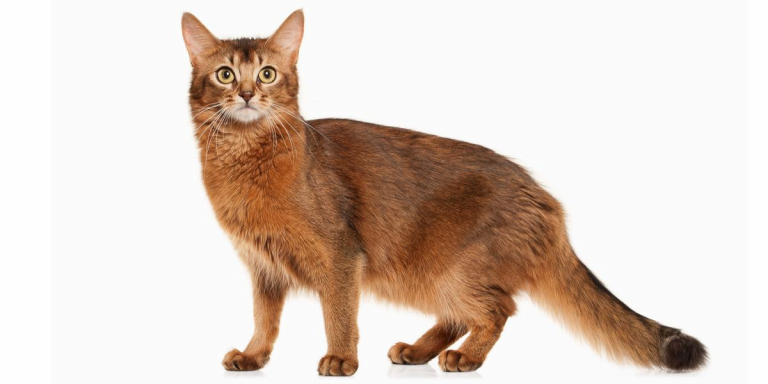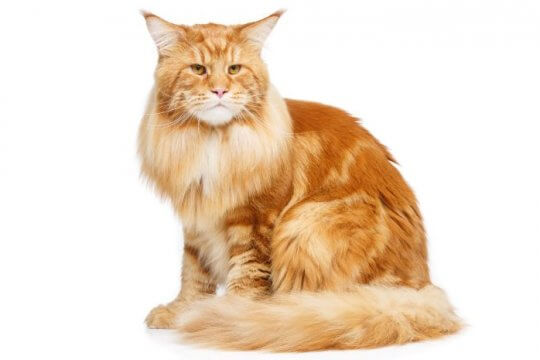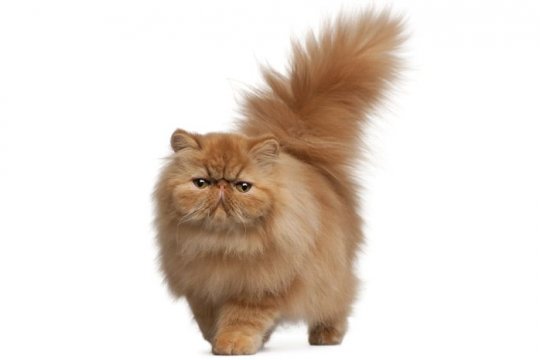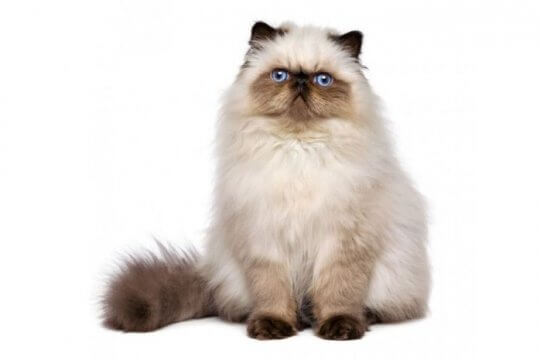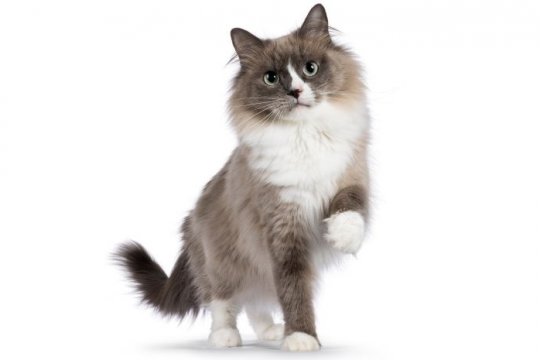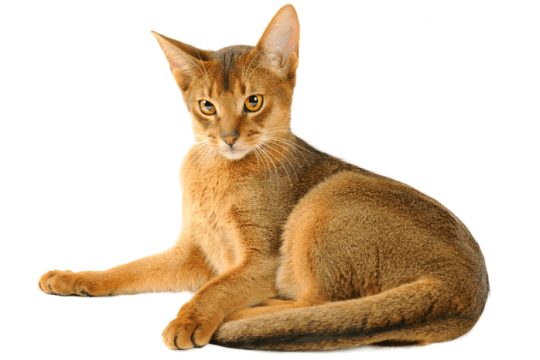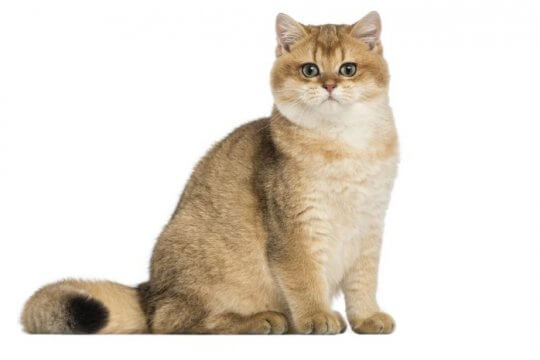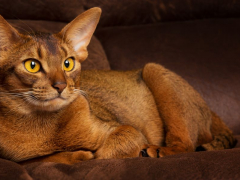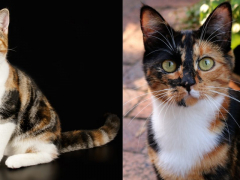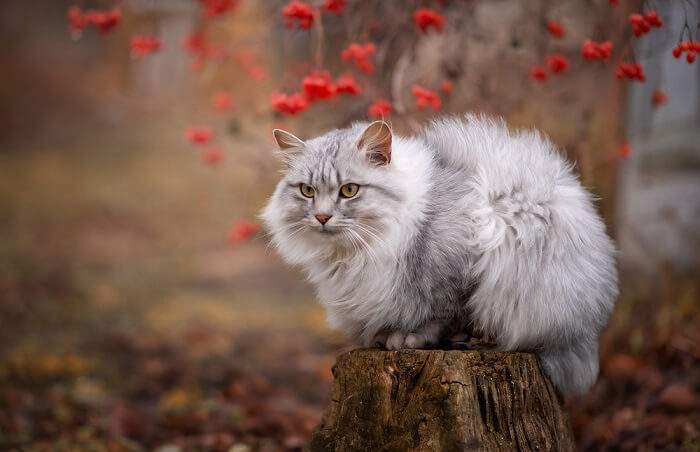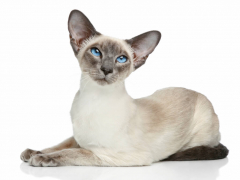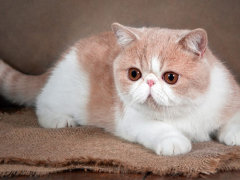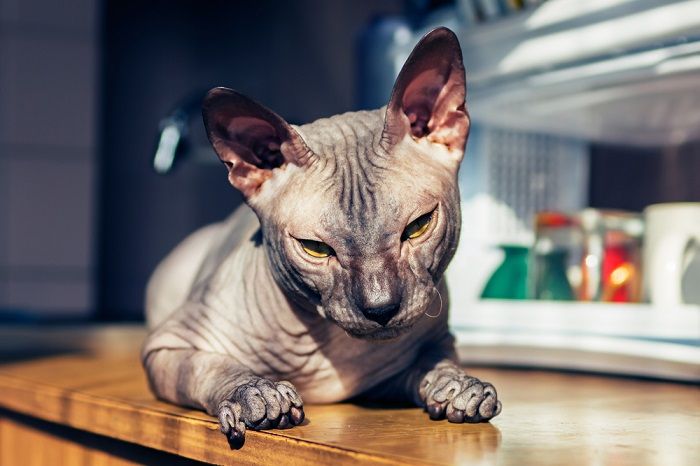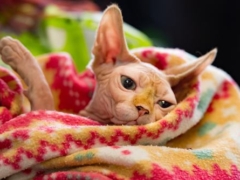Personality and Temperament
Can’t decide between an Abyssinian and a long-haired breed? The Somali cat offers the best of both worlds, with exquisitely soft ticked coats, striking facial markings, and all the personality that makes the Abyssinian such a popular breed.
Also known as long-haired Abbysinians, Somali cats make loving companions. Normally fond of their people, these adorable kitties are sometimes aloof with newcomers, but quickly form new friendships.
If you bring a Somali cat into your family, be prepared for fun and games! These cats are curious, alert, and a bit mischievous. They like to watch people and wait for opportunities to get involved in whatever is happening.
Open a cupboard, they’ll be right there, ready to poke their heads inside. Place clothing inside drawers, and they’ll soon find a way to help! Run a faucet, and the Somali cat might dab a paw in the water. After a while, these cats develop the ability to open drawers, doors, and cupboards on their own, and turn on taps for themselves, so they can play in the water without your help.
When it’s time to rest, the Somali will happily curl up in the nearest lap, perhaps kneading with paws and giving affectionate head butts. On chilly winter nights, they offer extra cuddle power, helping their families appreciate those silky-soft, cuddly coats even more.

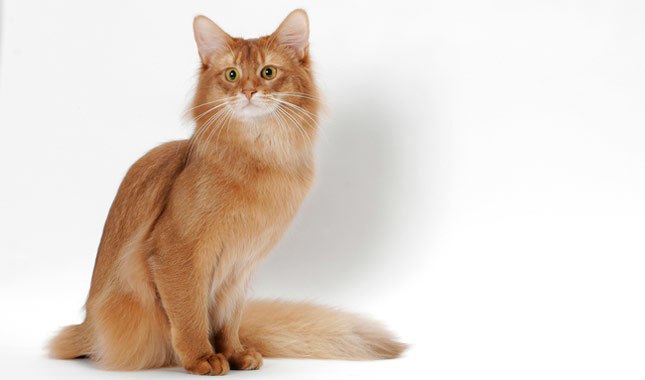
Care
Nutrition
Grooming
Exercise
Health
Somali cats have no unusual nutritional needs, although they thrive on a high-protein, low-carbohydrate diet. We recommend offering fresh food and/or a high-quality commercial brand that incorporates real meat or fish as the main ingredient.
With thick, plush double coats, Somali cats require routine brushing to remove loose hairs and help prevent matting. Like other breeds, the Somali benefits from routine tooth brushing at home.
As these cats are highly active, you might also wish to keep their claws trimmed to prevent excess damage to furnishings, clothing, and your skin.
The earlier you teach your kitten how to relax and enjoy grooming routines, the easier these tasks will be later in the cat’s life.
Somali cats are incredible athletes, easily making impressive long jumps and leaping to heights that might seem impossible. Renowned for their speed when racing from one room to the next, they typically enjoy big bursts of energy followed by a bit of down time.
It’s vital to provide space and appropriate structures for play when you share your home with a Somali cat. These kitties need a sturdy cat tree, at least one good scratching post, and plenty of toys including items that let you get in on the fun.
As friendly, outgoing individuals, Somalis often enjoy leashed walks outdoors. As with other routines, it’s easiest to teach a cat to walk on a leash from a young age, before habits have been fully formed.
Somali cats are typically robust and healthy. There are a few inherited diseases to be aware of including feline infectious anemia (FIA), autoimmune-mediated hemolytic anemia (AIHA), pyruvate kinase deficiency, myeldodysplasia, rentinal degeneration, osmotic fragility, and renal amyloidosis. None of these health issues are common.
History
The Somali cat breed got its start in the 1940s, long before breed registries granted official recognition. An Abyssinian cat breeder named Jante Robinson exported kittens from Britain to New Zealand, North America, and Australia. These cats occasionally produced long-haired Abyssinian kittens.
The first individual to make a stir in the cat fancy world was Raby Chuffa of Selene, a long-haired Abyssinian cat that was shown in the United States. In 1963, a Canadian breeder named Mary Mailing entered a long-haired Aby into her local pet show. The show’s judge, Ken McGill, was so impressed that he asked for one of Mailing’s cats to breed.
Despite growing interest in long-haired Abyssinian cats, many breeders expressed disdain and worked to prevent their numbers from increasing. At the same time, breeders who enjoyed the looks and personalities of the long-haired Abyssinians did the opposite, working to develop and promote the new variety.
We have an American breeder named Evelyn Mague to thank for naming the Somali breed. Cats from Ken McGill and another Canadian breeder named Don Richings were bred with Mague’s Somalis and international attention grew.
The Cat Fanciers Association (CFA) created the international Somali Cat Club in 1975, and granted the breed official recognition in 1979. It took over a decade for the Somali cat breed to achieve widespread international recognition.

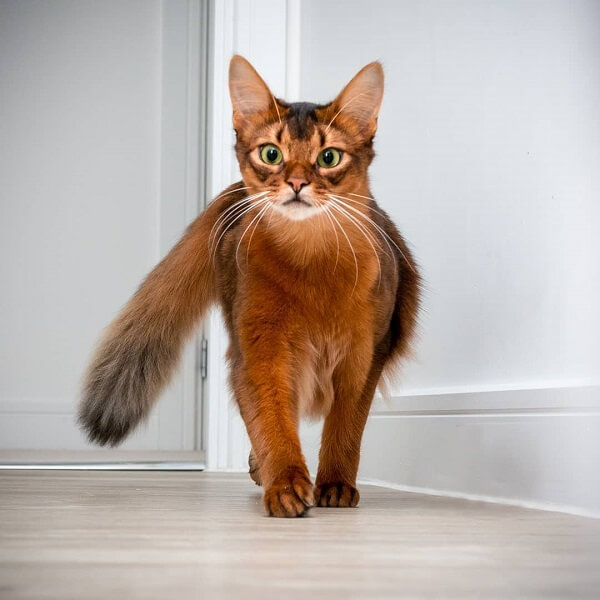
Eyes
Legs & Paws
Tail
The Breed Standard
Body
Head
Ears
Coat
Color
FAQ
How much does a Somali cat cost?
Somali cats cost between $1000 - $1500.
How big do Somali cats get?
Somali cats tend to be medium in size. A fully grown Somali cat might weigh between 8-12 pounds or more and range in height anywhere from about 8"- 10" inches tall.
How long do Somali cats live?
The Average lifespan for Somali is 11-12 years.
Do Somali cats shed?
Somali are long-haired cats, so you do have to expect a certain amount of shedding from this breed, but they don't shed as much as other cat breeds.
